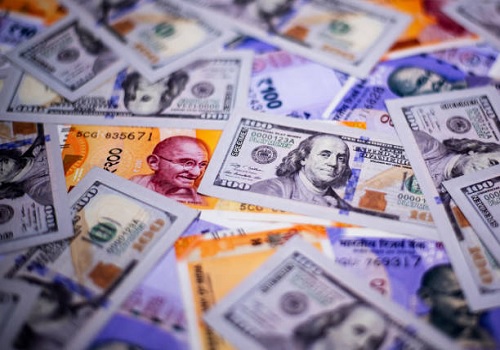Monthly Gold View by Mr. Chirag Mehta, Quantum Mutual Fund

Follow us Now on Telegram ! Get daily 10 - 12 important updates on Business, Finance and Investment. Join our Telegram Channel
Below are Views On Monthly Gold View by Mr. Chirag Mehta, Sr. Fund Manager-Alternative Investments, Quantum Mutual Fund
Gold Outlook – Dec 2020
As we move into the final month of this eventful year, market sentiment is mixed as investors seem to be weighing the mounting virus case count against optimism of vaccine breakthroughs. On the surface, risk and uncertainty seem to have ebbed as the progress made on the vaccine front has spurred optimism about a return to normalcy and concerns of a constitutional crisis in the US are fading with Trump conceding to a Biden transition at the White House.
This has boosted risk assets and hurt gold prices which ended the month 5.4% lower, at $1776/ounce. Gold prices seem stretched to the downside relative to the fundamentals as markets get carried away on the emergence of effective vaccines.
If you dig deeper, you will find that risks still persist.
1) Widespread access to a vaccine remains months away
Efficacy, regulatory approval, large scale manufacturing, costs and distribution of the vaccines still need to be worked out. So realistically the vaccine isn't coming to local pharmacies for the general public any time soon, while a second wave of the disease is already underway.
2) A return to normalcy is a long way and prone to setbacks
The pandemic induced economic damage has been severe - businesses have shut down and millions have lost their livelihoods. Therefore, expecting a full and immediate restoration of economic activity is naive. In fact, with a resurgence in cases in the United States and Europe, a complete reversal of the Great Lockdown has been further delayed, hurting the fragile recovery. The World Bank estimates that a full recovery will take up to 5 years. The global financial crisis, which was largely a financial crisis also took 7 years for full recovery. The COVID-19 crisis is much more severe in comparison.
3) National debts of governments are mounting
For instance, the US national debt has reached approximately 140% of the nation’s annual economic output. The debt has jumped a massive $4.8 trillion in 2020 to touch $27 trillion as the government rolls out fiscal measures to counter the economic damage. These debt loads not only impact an economy’s potential to grow but continue to weaken the purchasing power of fiat paper currencies. Such unprecedented expansion of balance sheets could potentially lead to defaults and debt crises in the long run, like the European Debt crisis which followed the Global Financial crisis of 2008.
4) The gush of liquidity is keeping equities elevated
Stock markets have never been as expensive as they are today. The Nifty 50 P/E ratio has jumped up from 28 at the start of 2020 to 35 as of November end and the S & P 500’s ratio has jumped up from 25 to 37. This is in spite of deteriorating fundamentals. These soaring valuations are a result of massive liquidity injections by central banks and investors ignoring near-term headwinds such as surging global Covid-19 infections, and instead looking ahead to 2021.
5) Real interest rates to go deeper into the red amid rising inflation
The global financial crisis of 2008 compelled central banks to keep interest rates at the zero bound for 6 years. The economic damage caused by the pandemic is much larger and is still ongoing. Not surprising then that central banks like the Federal Reserve have given themselves more room to maintain ultra-low rates and support the economy over the next few years by allowing inflation to run higher. Stimulus from governments to support the recovery will drive inflation as money trickles down the real economy. This will fuel a deeper drop in real or inflation-adjusted bond yields in the medium-to-longer term.
An understanding of these risks and an appreciation for gold’s stabilizing role in times of heightened risk and uncertainty, make holding gold an imperative for reducing portfolio risks.
Moving on to the developments on the policy front, it's more of the same.
1) Federal Reserve expected to increase asset purchases
Fiscal stimulus in the US was not expected during the lame-duck session. But another wave of coronavirus cases across the country has resulted in state level restrictions that could threaten the economic recovery, even as effects of previous fiscal stimulus are fading. In addition, Treasury Secretary Steven Mnuchin has said that he would allow the central bank's emergency lending programs that were rolled out in March to expire at year-end. The Federal Reserve is thus expected to increase its purchases of government debt to more than $120 billion monthly in the coming weeks to keep the economic recovery from caving in and reverse a recent rise in Treasury yields, having earlier committed to keeping rates near zero till 2023.
2) ECB too has big stimulus plans
The Bank’s President Christine Lagarde has said that a coronavirus vaccine is not a game changer for the institution’s monetary policy. Europe is staring at a worsening of the current economic slump with a second wave of infections and new lockdowns. The ECB is thus expected to announce an additional monetary stimulus of 500 billion euros in December.
3) Fiscal spending in the US to be stepped up
Even with a Republican-led Senate, Biden will get a stimulus bill, though smaller, passed early next year. But till that happens, gold prices will continue to witness weakness. With former Fed Chair Janet Yellen, who was viewed as pro-stimulus, being the President elect’s top choice for Treasury Secretary, hopes of a substantial fiscal package have got a boost.
Above views are of the author and not of the website kindly read disclaimer












 320-x-100_uti_gold.jpg" alt="Advertisement">
320-x-100_uti_gold.jpg" alt="Advertisement">









